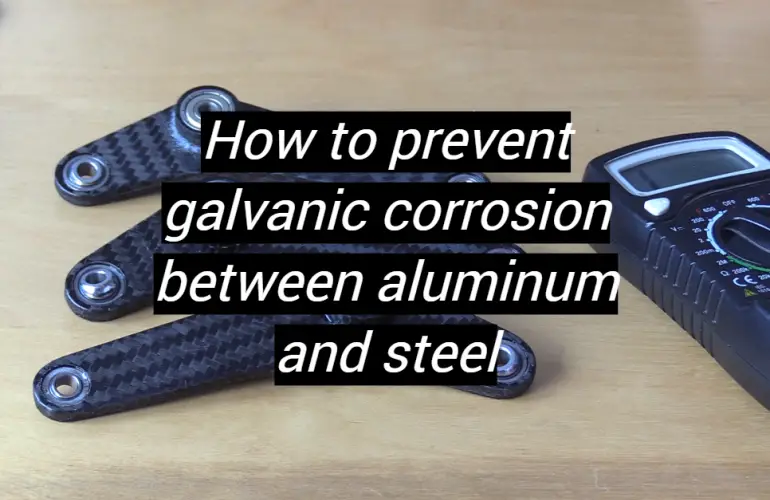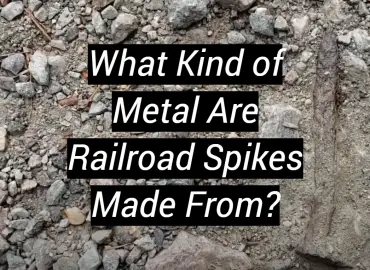Aluminum is used in many areas of our life and now it is very difficult to imagine mechanical engineering, electrical engineering, house construction, and other things without the use of aluminum alloy.
Aluminum is a very light metal, wear-resistant, ductile, conducts electricity and heat well, and has no magnetic properties. Aluminum has a light silvery color and is covered with a thin oxide film on top. It is this film that is the main source of aluminum corrosion protection. The oxide film has self-healing properties and is very durable.
Aluminum is resistant to environmental influences but can undergo contact corrosion if in contact with dissimilar metals. Under certain conditions, aluminum can form a strong galvanic pair with some metals. Dissimilar metals have different electrode potentials. So, for example, aluminum will act as the cathode, and the copper rivet with which you connected the aluminum sheet will become the anode. A chemical reaction will begin between them, the result of which will be the appearance of corrosion.
In what areas we can use aluminum
We use aluminum in many areas of production. Its alloys silumin and duralumin are used in metallurgy. We also use aluminum alloys in architecture, shipbuilding, construction of houses, shops, supermarkets, and other buildings, used in the manufacture of electrical engineering, in the space industry, and aircraft construction.
What kind of objects made of aluminum come across to us most often in everyday life? Let’s look at some examples.
A thin aluminum strip in rolls is supplied for the food industry and then cooling elements for radiators are made from it.
Aluminum pipes are very durable. We use them in finishing works, production of pipelines, water pipes, gutters, and gas pipelines.
Related Review: Best Aluminum Cleaners
Aluminum wire is used to make eclectic cables. Aluminum has a high electrical conduction property.
They make bushings of aluminum. They are easy to handle, install and use in production to connect the ends of a metal cable.
For manufacturing bolts, shafts, nuts, spindles, we use an aluminum bar.
Aluminum also enters the human body with food. We find small amounts of aluminum in peas, rice, and wheat.
Also, aluminum is used for manufacturing dishes. True, we do not recommend cooking acidic foods in such dishes, because a reaction will occur and aluminum will enter the food. As you can see, this is a widespread metal that, unfortunately, corrodes if it is used improperly, when exposed to the environment. What is aluminum corrosion and how to deal with it further in our article.
Types of aluminum corrosion
Corrosion renders the material unusable and severely spoils it. Sometimes parts that have corroded can be partially replaced, and sometimes this is not possible. To understand how to protect aluminum from the effects of corrosion, you need to know what types of corrosion exist. Depending on weather conditions, the aggressiveness of the environment, contact with saline solutions and alkalis, the effect of electric current on the material, the following types of corrosion are distinguished:
- surface corrosion;
- crevice corrosion;
- continuous metal corrosion;
- galvanic corrosion;
- electrical corrosion;
- thermal corrosion;
- intercrystalline corrosion;
- pitting corrosion of aluminum.
Any of the above destruction of metals under the influence of the above factors can jeopardize the integrity of your structure, parts. Improper connection of aluminum parts with other types of metal can also aggravate the process of destruction of the crystal lattice of the metal at the molecular level.
How to understand the galvanic corrosion process
When two dissimilar metals hit, we can observe the process of galvanic corrosion. Such corrosion occurs only when two metals with different electrochemical properties are close to each other under the influence of an electrolytic liquid, corrosive environment, or electrolyte film.
When such a process occurs, the metals enter a chemical reaction with electrolytes to create a cell. This cell corrodes one metal at the expense of another.
The process of galvanic corrosion
All materials have different electrode potentials. It is this difference in potentials between metals that touch and create an electric current. Material with positively charged particles – the cathode moves to the material with negatively charged particles – the anode. If the anode forms a more active metal, accordingly, the cathode will be less active. Because of this effect, the anode metal corrodes faster. Sometimes the metal that acts as a cathode may not undergo any changes at all and remain strong and intact.
What galvanic corrosion looks like
The destruction of the crystal lattice at the molecular level has certain characteristics. Visually, you can distinguish one type of metal corrosion from another. Galvanic corrosion has such essential features as:
- localized;
- located directly in the place where aluminum contact with other metals;
- the process of metal destruction occurs deeply, visually resembles holes, craters, and depressions in the plate;
- this process does not spread over the entire surface of the plate ant other aluminum things;
- has a uniform character.
Conditions for galvanic corrosion of aluminum
For the process of destruction of the crystalline structure of the material to occur, we must meet three conditions:
- presence of electrolyte;
- the contact with various types of materials and metals;
- exposure to an electric current;
- exposure to aggressive environments (salt, alkali, acids).
It is under these conditions that aluminum will react with another dissimilar metal, and galvanic corrosion will occur.
How aluminum paired with steel corrodes
The process of destruction of the crystalline structure of the material can be negligible and virtually nil and invisible. It all depends on what kind of metal we paired.
Aluminum – galvanized steel
If you look at the table of the galvanic range of aluminum with other metals, you see that zinc is more electronegative than aluminum. If you connect an aluminum sheet and use all kinds of galvanized steel fasteners, then over time there will be a slight destruction of the crystal lattice of the metal. Such an impact can only spoil the visual perception of galvanized fasteners, which will damage the aluminum sheet.
Aluminum – unalloyed steel
We often use screws, nuts, bolts from ordinary steel in aluminum constructions, and fasten aluminum sheets with them. We expose such structures to climate and weather. But experience shows that such compounds are subject to a minor process of destruction of the crystalline structure of the material. Slight rust may occur, and small stains may form on the aluminum surface. Such corrosion does not affect the structure but only spoils the surface, and how we perceive it visually.
Aluminum – stainless steel
This pair is least of all exposed to the impact and destruction of the crystal lattice under the influence of water, alkalis, salt, and other aggressive conditions. Here, the potential difference is approximately 650 MV. We increasingly use stainless steel as a connecting material, bolts, brackets, plugs, nuts, etc are made from it.
How to protect aluminum from the destruction of the crystal lattice
Use rigid anodes when pairing aluminum with steel. Most often they are made from galvanized, unalloyed steel or stainless steel.
We should also note that destruction of the crystal lattice occurs not only in water. We can find the formation of galvanic groups in any electrolyte. More often it could be moist soil, air, chemical sediment, and others.
The electrical current must not pass through the material, or we must ground it. Whenever possible, try to protect aluminum materials from corrosive conditions. Knowing with which metals it is better to combine aluminum, you will prevent its corrosion, and the structure or part will serve for over one year.
FAQ
Can you put aluminum and steel together?
Yes, you can put aluminum and steel together. It’s a process called welding and it involves heating the materials to a certain temperature so that they form a bond. Although some people may be able to do this on their own, it is usually done by a professional welder who has special skills and equipment. The bonds formed between aluminum and steel can be quite strong, but the process does require considerable care in order to ensure that it is done correctly. Additionally, the use of specialized coatings or sealants may also be necessary for added protection against corrosion or other environmental elements. It’s important to remember that different metals have different properties when heated – so make sure to consult with an expert about what kind of alloy would work best for your particular project.
How can we prevent galvanic corrosion between aluminum and carbon steel?
The most effective way to prevent galvanic corrosion between aluminum and carbon steel is by electrically isolating the two metals, either physically or chemically.
Physically isolating the metals can be achieved by using a separator that prevents electrical contact but still allows for water flow, such as in pipes and other structures where these two metals may come into contact. This could involve putting insulation or some kind of non-conductive material between them.
Chemical isolation can be achieved by coating one of the metals with a paint or coating which acts as an electrical insulator, preventing an electrical connection from being made. This type of protection also helps to reduce friction, which can help reduce corrosion over time. Additionally, you might consider using a sacrificial anode, which is a material that has a more negative electrochemical potential than the metal it’s protecting. This helps to divert current away from the metal that needs protection, thus reducing corrosion.
Ultimately, preventing galvanic corrosion between aluminum and carbon steel requires thoughtful consideration of their arrangement and potential contact points, as well as proper installation and maintenance of insulation materials or coatings. Taking these steps can help ensure the longevity and integrity of your structure or equipment.
How is aluminum protected from galvanic corrosion?
In order to protect aluminum from galvanic corrosion, it must be isolated from more active metals. This can be done by coating the metal with paint or a thin layer of plastic film. Additionally, an anodic protective coating can be applied directly to the surface of the aluminum, which will prevent the formation of galvanic couples. To further reduce the chances of galvanic corrosion, any contact points between dissimilar materials should be separated by spacers made of non-conductive materials like rubber or plastic.
Finally, keeping surfaces clean and dry is important for reducing the potential for corrosion – so regularly cleansing exposed areas is recommended. If galvanic corrosion does occur on aluminum surfaces despite these measures, treating them with mild acids or alkaline cleaners may help to reverse the damage.
Can aluminum be in contact with galvanized steel?
Yes, aluminum and galvanized steel can be in contact with each other without any issues. Galvanizing is a process that coats the steel with zinc to help protect it from corrosion, while aluminum does not need any additional protection. The two materials are not reactive towards each other, so there is no worry about them causing any sort of reaction when they come into contact. However, you should be aware that if water gets between them, it can cause electrolysis – a process where electricity flows between the two metals and causes wear over time. To avoid this problem, make sure there is no water or moisture present in the area where they meet. With proper care taken to keep them dry, aluminum and galvanized steel can safely interact without any issues.
What do you put between aluminum and steel?
When it comes to using metals in construction and other industrial applications, there are a number of different materials that can be used. The most common materials used in between aluminum and steel are galvanized steel, bronze, brass, copper, and stainless steel. Each of these metals has its own unique properties which make them suitable for specific uses. For example, galvanized steel is often chosen for outdoor use because of its resistance to corrosion, while copper is popular for electrical wiring due to its high conductivity. Ultimately the best material for any application will depend on the intended purpose and environment it will be exposed to. Both plastic and rubber washers or gaskets would be good suggestions.
Will aluminum touching steel cause corrosion?
In general, aluminum and steel won’t corrode when they touch each other. However, as with any type of metal combination, there are certain conditions that can cause corrosion. For instance, if you have an electrolyte solution (like seawater or de-icing salt) between the two metals or the steel is in a more oxidized state than the aluminum then galvanic corrosion could occur. It’s also important to make sure that both metals remain clean and free of dirt and debris which could act as a bridge for corrosive elements to travel across. If all these factors are taken into account, then aluminum touching steel should not cause corrosion. Be sure to check regularly for signs of corrosion just in case though!
Does aluminum react with galvanized steel?
Yes, aluminum and galvanized steel can react when they are in contact with each other. Galvanized steel is coated with a layer of zinc, which can corrode over time when it’s exposed to the elements or acidic substances like vinegar, lemon juice, salt water, etc. Aluminum is an active metal that can easily oxidize and create corrosion products that can damage both metals. If you plan on using these two materials together, consider coating them both with a protective material like paint or epoxy, or use spacers between them to prevent direct contact. Doing this will help slow down or prevent any reaction from occurring.
If you’re still unsure about how aluminum and galvanized steel might interact in your project, it’s best to consult a professional and get their advice. They can look at the specifics of your design and determine which materials are best suited for the job.
Remember, corrosion is an unpredictable process and it’s always better to be safe than sorry!
What prevents galvanic corrosion?
Galvanic corrosion can be prevented by using a metallic barrier such as paint, enamel, or zinc plating between dissimilar metals. Additionally, using sacrificial anodes (metallic pieces designed to corrode instead of the primary metal) can prevent galvanic corrosion. Lastly, inhibitors such as paints and coatings containing inhibitors like phosphates or chromates can help slow down the process of galvanic corrosion.
Another effective way to reduce galvanic corrosion is to use a cathodic protection system. A cathodic protection system contains an impressed current source which helps protect against corrosion by sending an electric current through the metal you are trying to protect. This method works because it will produce a more negative potential on the protected area than the more negative potential of the surrounding corrosive environment.
Finally, proper design and installation techniques can also help prevent galvanic corrosion. For example, ensuring that two metals are not placed in direct contact with each other can reduce the risk of corrosion significantly. Additionally, making sure to use appropriate fasteners and sealants will further help reduce the chance of galvanic corrosion.
What metal will not corrode with aluminum?
The metal that will not corrode with aluminum is stainless steel. Stainless steel has a chromium oxide layer which prevents the metal from reacting with aluminum. Additionally, stainless steel is highly durable and resistant to corrosion, making it an ideal choice for many applications where aluminum might be present. Other metals that are also inert to aluminum include titanium, tantalum, molybdenum alloys, and certain nickel-based alloys. It’s important to note that if two dissimilar metals come into contact they may form galvanic cells which can ultimately cause corrosion of one or both of the materials over time. For this reason, it’s important to ensure any metals used in contact with each other are compatible and able to resist corrosion.
Another important factor to consider is the environment in which aluminum and other metals are exposed to. For example, metals placed outdoors may be subject to moisture which could cause corrosion more quickly than if they were kept indoors. Therefore, when selecting a metal for use with aluminum it’s important to choose one that can withstand the conditions of its intended application. Proper maintenance and care can also prevent the risk of corrosion over time.
Ultimately stainless steel is a great choice for use with aluminum as it will not corrode or react with other metals. However, depending on the environment and application it’s always best to double-check compatibility before making any purchases or installations.
What corrodes more aluminum or steel?
Aluminum is actually more prone to corrosion than steel. Steel develops a protective layer of iron oxide when exposed to the environment, which helps prevent further corrosion. Aluminum has no such protection and can corrode quickly if not treated properly. Aluminum alloys tend to be more resistant to corrosion due to various elements being added during manufacturing but are still much more prone to corrosion than steel. To protect aluminum from corrosion, it needs to be sealed or covered with paint or another protective coating. If that isn’t done, oxidation will cause the surface of the aluminum to weaken and eventually erode away over time. In short, steel is much less likely to corrode than aluminum, although both will corrode under certain circumstances.






